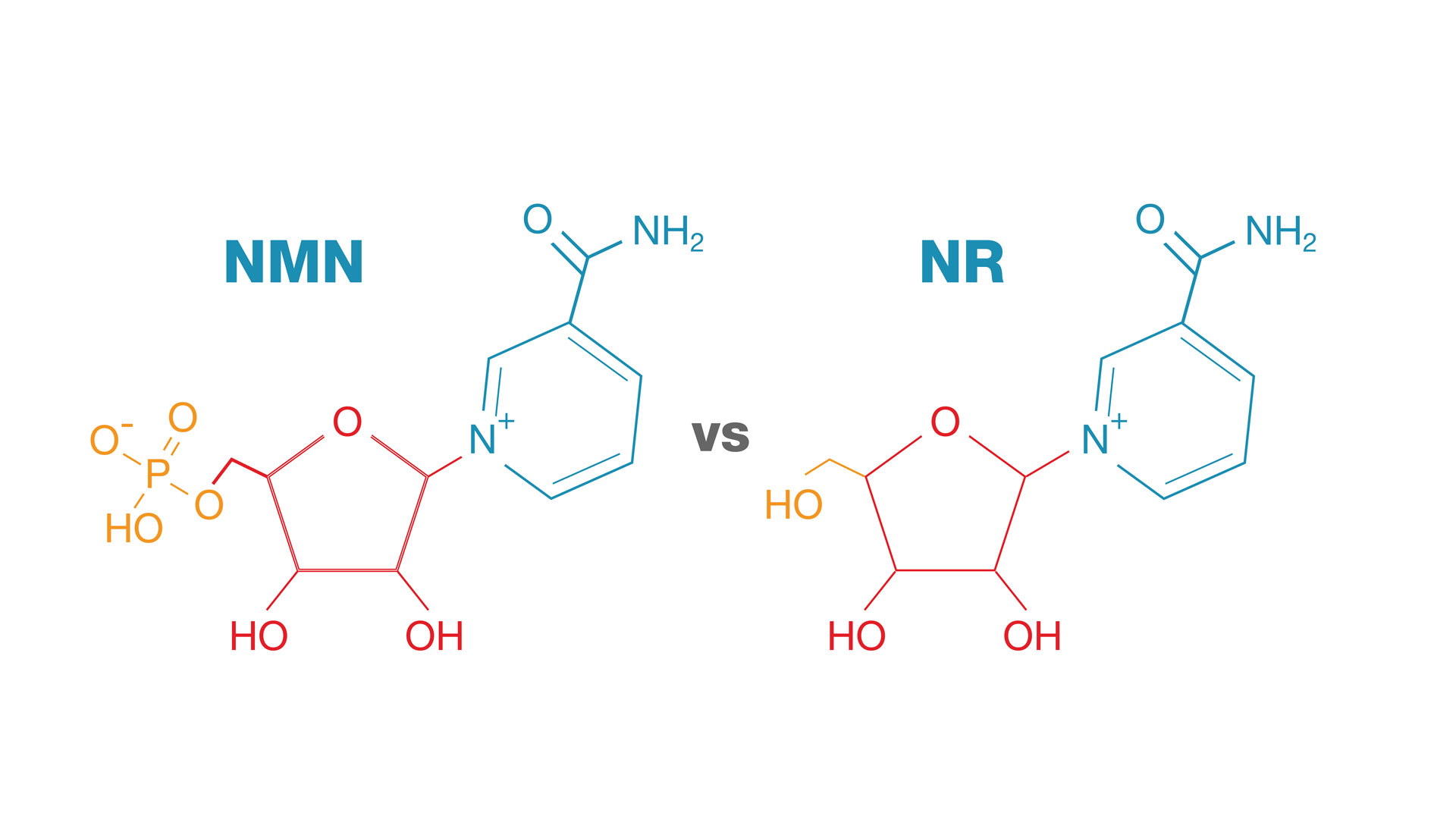Published: 2:33 p.m. PST May 5, 2020 | Updated: 1:12 p.m. PST Nov 2, 2020
Nicotinamide mononucleotide (NMN) and nicotinamide riboside (NR) are biosynthetic precursors to an essential molecule for metabolism– nicotinamide adenine dinucleotide (NAD+). Numerous studies indicate NAD+ levels decrease significantly during aging, with restoration of NAD+ levels in aged animals extending lifespan and promoting health. Research on the two molecules indicates supplementation with either increases NAD+ levels during aging. What are the differences between these NAD+ precursor molecules?
Differences between NMN and NR relate to their molecular structures along with how cells biosynthesize these molecules to NAD+.
Differences between NMN and NR
The molecular structures of NMN and NR are roughly the same, except NMN has an added phosphate group. This added phosphate group makes NMN a larger molecule than NR. Some scientists believe NMN is too large to cross cellular membranes and must convert to NR before entering cells, where NAD+ biosynthesis occurs. Otherwise, NMN would need to get transported into cells by a transporter specific for NMN, such as Slc12a8.











